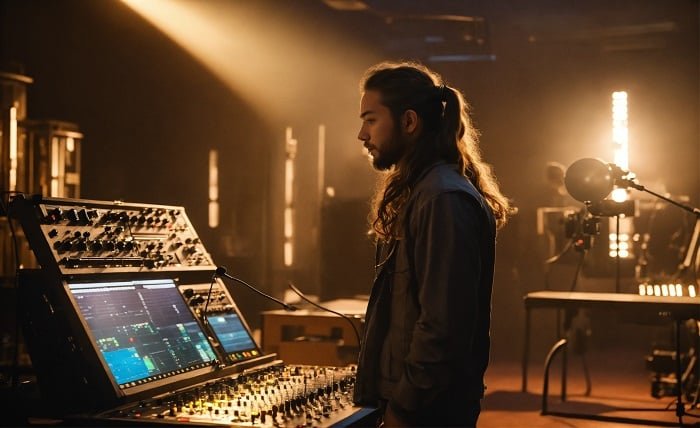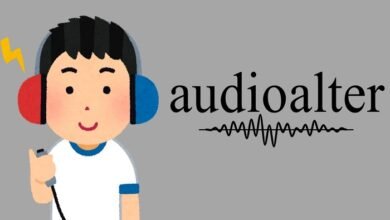The Power of AudioAlter Reverb: A Comprehensive Guide

Reverb is an essential tool in audio production that can drastically change the way a sound or track is perceived. Whether you’re mixing music, designing sound effects for video, or enhancing podcast audio, the right reverb can add depth and dimension. Among the various reverb plugins available today, AudioAlter Reverb stands out for its flexibility and intuitive interface. In this guide, we’ll take a deep dive into AudioAlter Reverb, explore its features, and provide tips on how to make the most of this fantastic audio tool.
What is AudioAlter Reverb?
AudioAlter Reverb is an advanced plugin designed to simulate the natural reflections of sound within different environments. Reverb, short for reverberation, is the persistence of sound after the original sound is produced, caused by multiple reflections off surfaces like walls, ceilings, and floors. AudioAlter Reverb allows users to manipulate these reflections to achieve a wide range of effects, from subtle room ambience to large, ethereal spaces.
The main attraction of AudioAlter Reverb lies in its ease of use combined with powerful customization options. Whether you’re an amateur producer or a seasoned audio engineer, you can quickly find the right settings to match your audio needs. This makes it an ideal choice for both beginners and professionals alike.
Key Features of AudioAlter Reverb
AudioAlter Reverb boasts a variety of features that make it a go-to plugin for users across different industries. Some of the standout features include:
- Multiple Reverb Algorithms: AudioAlter Reverb offers several reverb types, including room, hall, plate, and more, allowing you to choose the perfect environment for your audio.
- Intuitive User Interface: The plugin’s user interface is straightforward, with easily adjustable parameters like decay time, early reflections, and reverb size. This makes it easy for both beginners and experienced users to dial in the perfect sound.
- Advanced Modulation Options: For more creative sound design, AudioAlter Reverb provides modulation controls that let you add movement and variation to your reverb tail.
- Low CPU Usage: Despite its comprehensive feature set, AudioAlter Reverb is optimized to minimize CPU load, making it suitable for use in larger projects with multiple tracks and effects.
These features combined ensure that AudioAlter Reverb remains one of the most versatile tools for reverb processing, allowing you to achieve professional-quality results without the need for expensive hardware.
How AudioAlter Reverb Enhances Music Production
One of the most common uses for AudioAlter Reverb is in music production. Reverb is essential for adding atmosphere and space to dry recordings, such as vocals, drums, and instrumental tracks. By applying reverb through AudioAlter, producers can give a sense of depth to their mixes and ensure that each element sits naturally in the soundscape.
For instance, adding a subtle room reverb to a vocal track can make it feel like the singer is performing in a specific space, whether that’s a small studio or a large concert hall. Similarly, a lush hall reverb can give an orchestral arrangement an expansive, grand feeling.
AudioAlter Reverb’s advanced features allow users to experiment with different reverb types and fine-tune parameters like decay time, pre-delay, and damping. This level of customization helps users to achieve the perfect sonic atmosphere for each track in their project.
Using AudioAlter Reverb for Sound Design
Sound designers can also benefit greatly from AudioAlter Reverb. Whether you’re working on a film soundtrack, a video game, or a podcast, reverb plays a crucial role in shaping the auditory experience. Reverb can create a sense of place and time, helping to immerse the listener in the world you’re building.
For instance, in a horror film, the sound of footsteps in a long, empty hallway can be transformed with the help of AudioAlter Reverb. By adjusting the decay time and early reflection settings, you can make the footsteps sound like they’re echoing in a vast, ominous space. On the other hand, a more subtle reverb effect could be used for a serene forest scene, enhancing the natural ambiance without overpowering the sound.
AudioAlter Reverb’s ability to create both subtle and dramatic effects makes it a powerful tool for any sound designer. Whether you’re looking to add realism or explore creative soundscapes, this plugin is versatile enough to meet all your reverb needs.
Best Practices for Using AudioAlter Reverb in Mixing
When using AudioAlter Reverb in a mix, there are a few best practices that can help you achieve the best results. Here are some tips:
- Use Reverb Subtly: It’s easy to get carried away with reverb, but overusing it can make your mix muddy. Start with subtle reverb settings and gradually increase the effect as needed.
- Don’t Overdo It on the Low End: Reverb tends to build up more in the low frequencies, which can cause a mix to feel congested. To avoid this, use high-pass filters to cut off the low-end reverb or adjust the damping settings.
- Use Pre-Delay for Clarity: Pre-delay helps to create a sense of space by delaying the onset of the reverb. This ensures that the original sound is clear before the reverb tail sets in, improving the overall clarity of the mix.
- Experiment with Modulation: The modulation options in AudioAlter Reverb can add movement to the sound, which can be especially useful for creating evolving textures or unique effects.
By following these tips and experimenting with different settings, you can make the most out of AudioAlter Reverb and improve the overall quality of your mixes.
AudioAlter Reverb in Podcasting and Post-Production
For podcasters and those involved in post-production audio work, AudioAlter Reverb can be a game-changer. Whether you’re adding reverb to voiceovers, interviews, or sound effects, this plugin can help transform a flat recording into something more dynamic.
In podcasting, adding a bit of reverb can make voices sound more natural by simulating the acoustics of the environment in which the speaker is talking. If you’re working with dialogue recorded in a dry, controlled environment, applying a slight room reverb can help make it sound like the conversation is taking place in a more realistic space.
Additionally, post-production audio for movies and TV shows can benefit from AudioAlter Reverb. Whether you’re adding ambiance to a scene or designing an entire soundscape, reverb can help set the tone and convey a sense of realism. From creating echoing voices in a cave to the reverberations of a large concert hall, the possibilities are endless.
AudioAlter Reverb vs. Other Reverb Plugins
There are plenty of reverb plugins on the market, so why choose AudioAlter Reverb? Compared to other popular reverb plugins, AudioAlter stands out in terms of both ease of use and feature-richness. Many other plugins can be complicated and require a steep learning curve. However, AudioAlter Reverb’s intuitive interface makes it easy for anyone to use, regardless of experience level.
Additionally, AudioAlter Reverb offers a high degree of customization and flexibility, allowing users to tailor the sound to their exact needs. Whether you’re working on music, sound design, or post-production, you can be sure that AudioAlter Reverb will help you achieve professional-quality results.
Conclusion
AudioAlter Reverb is an incredibly versatile tool that can enhance any audio production project. With its wide range of reverb algorithms, advanced modulation options, and user-friendly interface, it’s suitable for everything from music production to sound design and podcasting. By understanding the key features and best practices, you can unlock the full potential of AudioAlter Reverb and elevate your audio creations to new heights.
Whether you’re looking to add subtle space to a vocal track or create complex, evolving soundscapes, AudioAlter Reverb offers the tools you need to achieve the perfect reverb effect. So, don’t hesitate—explore AudioAlter Reverb today and discover a world of new sonic possibilities!
FAQs
1. What types of reverb are available in AudioAlter Reverb?
AudioAlter Reverb offers several types of reverb, including room, hall, plate, and more. Each type provides a unique character to suit different audio needs.
2. How do I avoid muddy mixes when using AudioAlter Reverb?
To avoid muddy mixes, use subtle reverb settings, cut off low-end frequencies with a high-pass filter, and adjust the damping to control excess reverb buildup.
3. Can AudioAlter Reverb be used in sound design for movies and video games?
Yes, AudioAlter Reverb is a great tool for sound design, allowing you to create realistic environments and unique soundscapes for films, games, and other multimedia projects.
4. Does AudioAlter Reverb work on both Mac and Windows?
Yes, AudioAlter Reverb is compatible with both Mac and Windows operating systems, making it accessible to a wide range of users.
5. How can I get the best results from AudioAlter Reverb?
To get the best results, experiment with different reverb types, use pre-delay for clarity, and adjust modulation to add movement and interest to your reverb effects.





